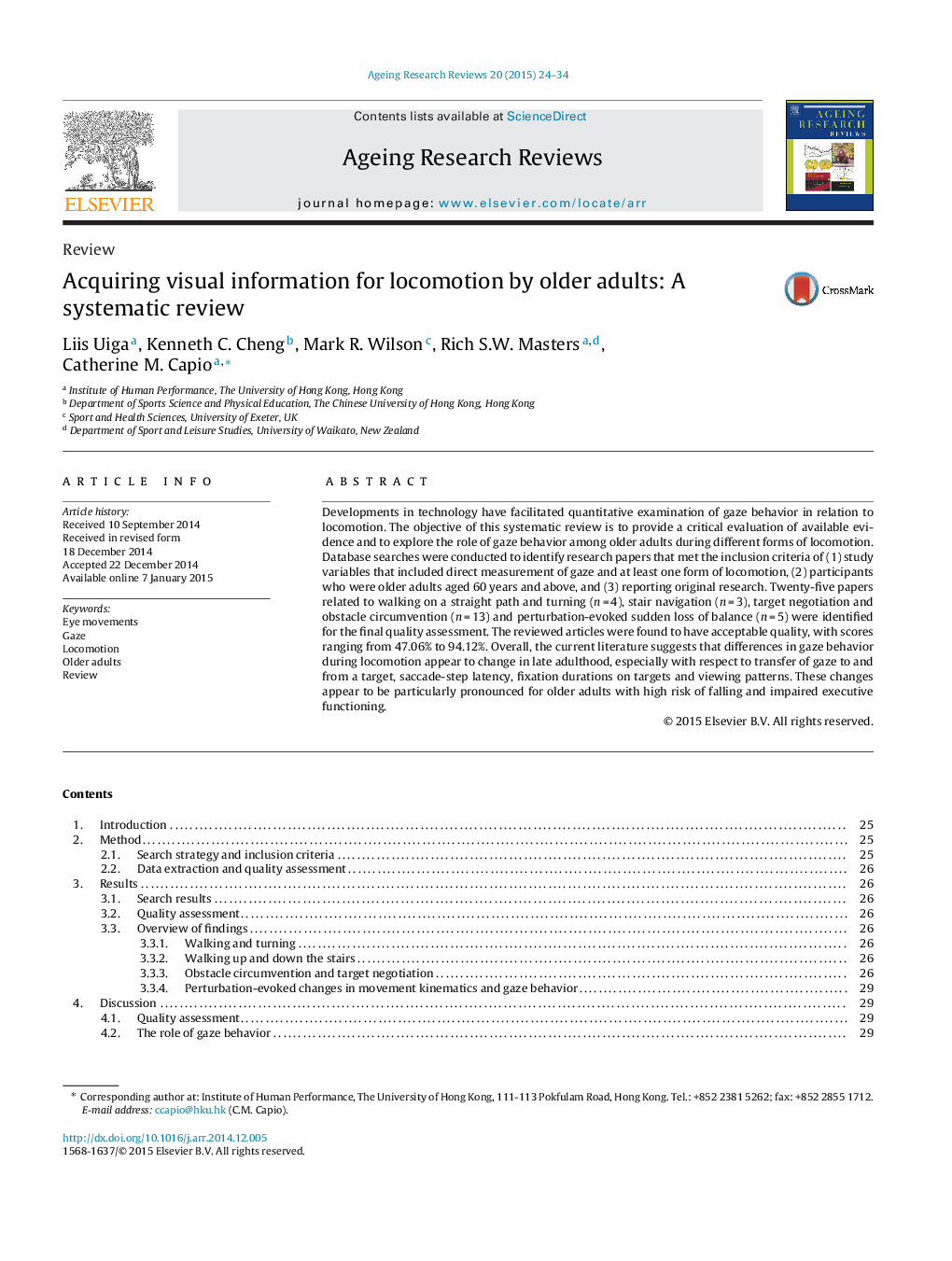| Article ID | Journal | Published Year | Pages | File Type |
|---|---|---|---|---|
| 1902223 | Ageing Research Reviews | 2015 | 11 Pages |
•Older adults display early gaze transfer toward a stepping constraint during locomotion.•Early gaze transfer has a detrimental effect on stepping accuracy.•Saccade/step latency influences stepping velocity.•Pronounced gaze behavior changes are found in older adults with high risk of falling.
Developments in technology have facilitated quantitative examination of gaze behavior in relation to locomotion. The objective of this systematic review is to provide a critical evaluation of available evidence and to explore the role of gaze behavior among older adults during different forms of locomotion. Database searches were conducted to identify research papers that met the inclusion criteria of (1) study variables that included direct measurement of gaze and at least one form of locomotion, (2) participants who were older adults aged 60 years and above, and (3) reporting original research. Twenty-five papers related to walking on a straight path and turning (n = 4), stair navigation (n = 3), target negotiation and obstacle circumvention (n = 13) and perturbation-evoked sudden loss of balance (n = 5) were identified for the final quality assessment. The reviewed articles were found to have acceptable quality, with scores ranging from 47.06% to 94.12%. Overall, the current literature suggests that differences in gaze behavior during locomotion appear to change in late adulthood, especially with respect to transfer of gaze to and from a target, saccade-step latency, fixation durations on targets and viewing patterns. These changes appear to be particularly pronounced for older adults with high risk of falling and impaired executive functioning.
